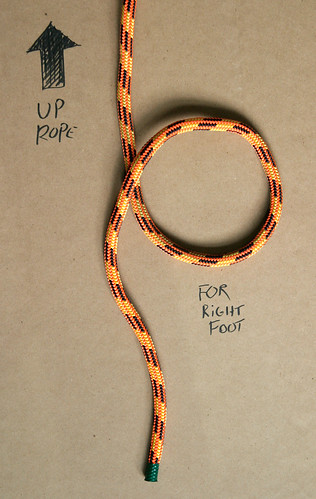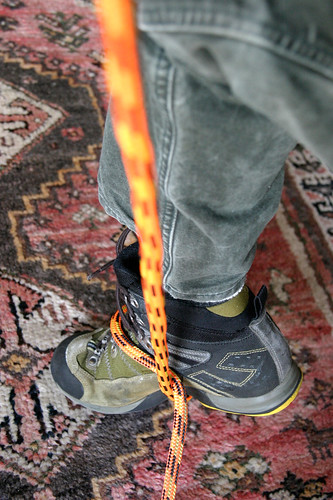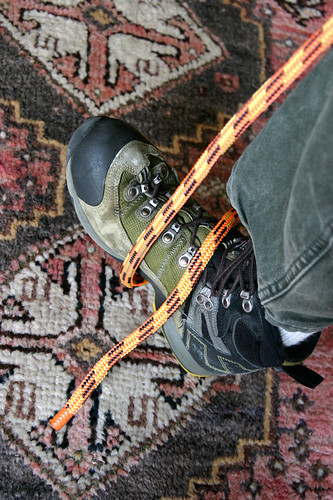What a wicked web of gear complexity you've woven!
I'd go the other direction, figure out the most simple gear configuration to ascend DRT and then add items to improve as needed.
1. The hitch
Are you using a prussik hitch? If so dump it and go with one of the commonly used varieties: VT, Knut, Distel, etc. I use a 4 wrap
XT, shown here.
Use an HMS/pear or similar shaped biner inverted. I like knotted eyes on the split-tail, they grab the biner better and slide around less than spliced eyes, everyone has opinions and preferences. Tied eyes are good to start with so you can dial in your split tail length.
2. Slack tending pulley
This is not used for normal ascent, it is used primarily for returning from a limb walk or other situations in the crown when you need to take slack out of the system one-handed. Again, there are many different ways to configure but this is the basic principle. Don't try to use the pulley to take slack out while ascending.
3. Play in the system
You want as little play in the system as possible. You bridge introduces a certain amount of play, the biner/hitch attachment introduces play. Minimize connectors, length of split tail etc. as much as possible.
4. Ascent away from the trunk
To get started off the ground you'll need to hand feed the tail through the foot ascender for a few pulls. If you've minimized play in the system hopefully you can climb with both hands on the rope above the hitch, or one above and one below. While you're ascending the hitch should just ride on the rope. Your foot ascender takes out the slack. When you sit back to rest or when you reach a limb the hitch should grab. Sometimes you need to flick the hitch up to seat it. The hitch will not grab if you don't allow it to take the load. For instance if you take part of the load with the foot ascender when you sit back you'll end up with a knee in your face and you'll be yelling "My hitch won't grab!"
5. Ascent with trunk contact (not body-thrusting)
One foot on the trunk the foot with the CMI or Pantin ascender on the tail. Climb. Works great, much easier than body thrusting. Again, use your foot ascender to take slack out of the system as you climb.
6. Alternate use of handled ascender
Put a handled ascender on the tail below the hitch, put a footloop (double or single) on the handled ascender. You can make a footloop with 8mm rope. Tune the length of the footloop so that when you move the ascender up as high as you can under the hitch, you're in a good position to stand up on the foot loops. You don't want the footloops so high that you're laying on your back as you try to stand on them, it will burn your arms out too fast. Smaller steps are more efficient. You want to keep your body as upright as is practical with this technique. Climbing against the trunk take one foot out of a doubled footloop and put it on the trunk, the other remains on the footloop.
Hope that helps.
-moss







